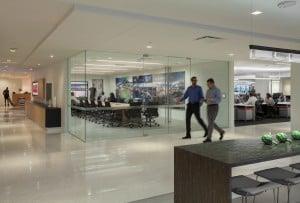 ElectricalConnection.org
ElectricalConnection.org
Connect with Us:
Facebook
LinkedIn
Twitter
YouTube
In 1904, St. Louis literally became an international beacon for electrical lighting’s potential with the spectacular illumination of the World’s Fair. It also defined the potential of a still nascent professional electrical industry. IBEW Local 1, which is celebrating its 125th anniversary this year, was just 13 years old. The National Electrical Contractors Association, whose members employ IBEW, was just three years old having been founded in 1901. They teamed to light the World’s Fair using a staple of the 20th century — the incandescent light.
Today, more energy efficient light emitting diodes (LEDs) are transforming the industry. The most prominent IBEW/NECA LED installations can be found at such landmarks as the Stan Musial Veterans Memorial Bridge, the James S. McDonnell Planetarium and new iconic businesses such as IKEA. But the future holds even brighter prospects to optimize LED efficiencies with smart lighting technology. 
Intelligent lighting control has been described as the quiet revolution in lighting. The technology of luminaire-based controls pairs lighting sensors and a controllable driver with LED luminaires. They “communicate” with each other using low-voltage wiring or radio frequency (Wi-Fi). Most of these systems are room-based, but the next step up is building or campus-wide centralized control systems. But with a growing list of control system suppliers, how do you decide which one is right for your building or campus?
The IBEW/NECA Electrical Industry Training Center evaluates all types of lighting control systems to integrate the most promising technology into its more than 70-year-old training program. Building owners and real estate managers should consider the following:
The advances in LED lighting and intelligent lighting systems are leading many businesses to evaluate their lighting needs for energy savings and to create better work environments to attract the best employees. As a results, numerous lighting control systems are coming onto the market or fine tuning their products, but it’s not a “one size fits” all. Visit our contractor page to get the best advice on what system can best brighten your business now…and in the future.
Recent News